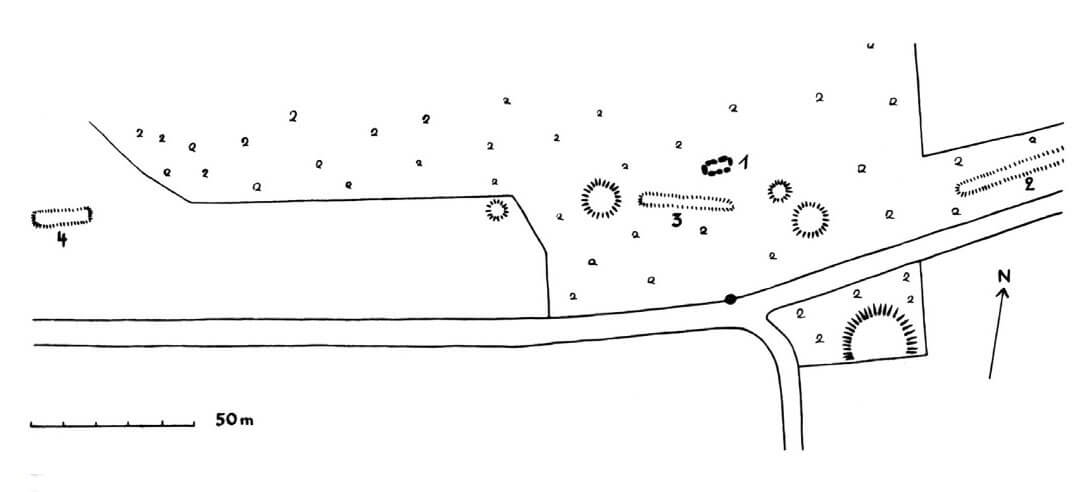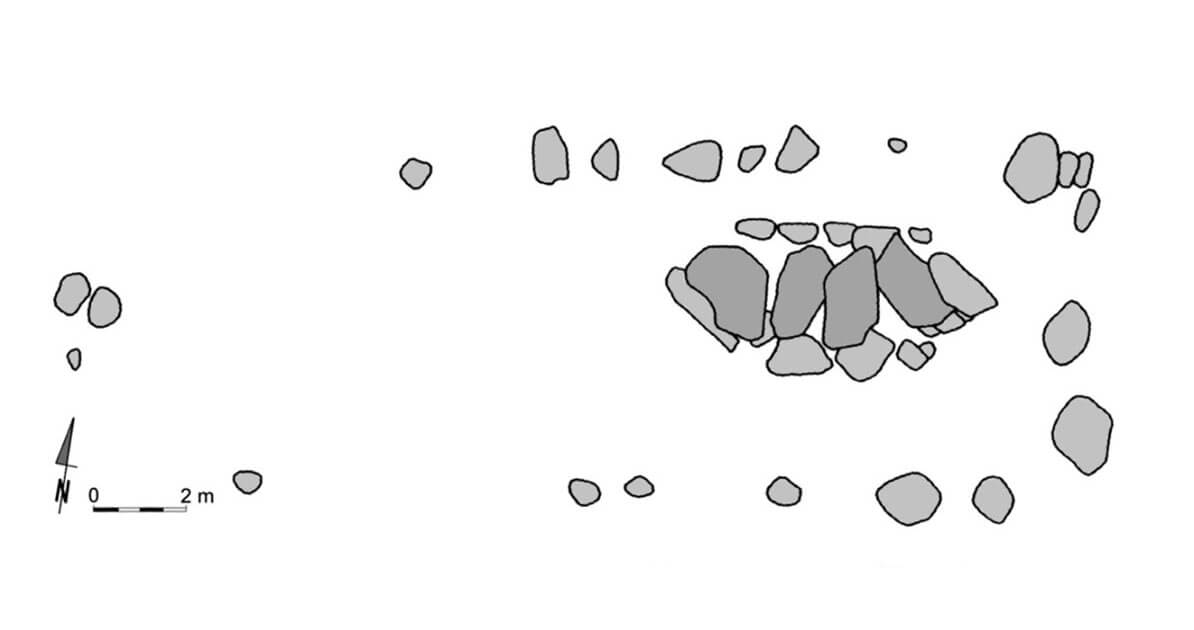History
The megalithic cemetery in Borkowo was established in the Neolithic period around 3000 BC. Its builders may have been the local community of the Funnel Beaker Culture, maintaining close contacts with the Central Neolithic communities of the northern group of this culture, inhabiting the area of northern Germany and southern Scandinavia. The basis of their livelihood was animal husbandry and primitive agriculture. They supplemented their food resources with gathering, hunting and fishing. In their daily lives they used tools of flint, stone, bone, horn and wood; they also had an ability to make richly decorated clay vessels and weaving. Settlements were established on sandy terraces near the water, built of wooden rectangular or square houses. The cult of ancestors and the cult of the sun, in relation to which some tombs were orientated, could play an important role in the societies of that time. The tombs in Borkowo, including the unique passage tomb, may have been built for the high-status deceased, chiefs or priests. It could also be a place of worship where unknown rituals were performed. The ashes of the deceased were placed in the dolmen many times, after cleaning the previous burials against the walls of the chamber. The cemetery was probably also used in the Bronze Age, when the people of the Lusatian Culture erected their own chamberless burial cairns.
Architecture
The cemetery was situated along the high, steep edge of the plateau, above the valley of the nameless little river. All the tombs placed on it were orientated with their longer sides on the east-west axis, and all were equipped with stone surrounds with the forehead facing east and the rear part facing west.
In the northern part of the site, there was the only passage-type chamber tomb in the cemetery. It was built of 12 large stones, five of which formed the longer sides, and single ones closed the passage from the east and west. The whole structure was covered with five successive boulders, giving internal dimensions of 4.5 x 1.5 meters (external 7 x 3.5 meters), which was the average size for this type of building. The chamber was originally covered with a mound (cairn) of earth about 23 meters long and about 8.5 meters wide from the forehead. The entrance was on the south wall. It was created in such a way that the stone, second from the east, was about 0.5 meters lower than the other load-bearing boulders, so it was possible to go down a step along it, down to the interior. In addition, a narrow entrance corridor could be located in the south-east corner.
There were also at least three Neolithic chamberless tombs in the shape of elongated rectangles and five later circular cairns in the cemetery. Among the former, the tomb marked as number 3 had the largest size, 29 x 9 meters, under the mound of which there was a circular circumference of stones, next to which, among others, were found. a few decorated fragments of pottery of the Funnelbeaker Culture and two axes: a flint and a stone one.
Current state
The tomb in Borkowo marked with number 1 is considered to be the only passage-type chamber tomb in Poland and to the east of the Elbe. Its core, forming a stone chamber, has been preserved, while the earth layer making up the mound has been dispersed. The chamberless tombs and cairns are in a much worse condition. Admission to the site is free.
bibliography:
Ilkiewicz J., Borkowo. Cmentarzysko megalityczne, Koszalin 1998.
Wierzbicki J., Grobowiec megalityczny z Borkowa, stan. 1 , gm. Malechowo, woj. zachodniopomorskie. Jedyny grób korytarzowy na ziemiach polskich? [w:] Historia i kultura Ziemi Sławieńskiej, tom IV, Gmina Malechowo, red. W.Rączkowski, J.Sroka, Sławno 2005.





